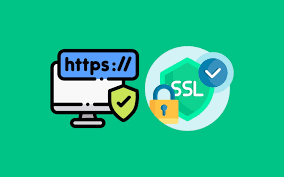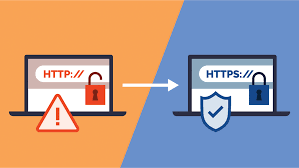Analysis of Cryptocurrency Scams in 2025
According to the article, cryptocurrency scams remain a significant issue in the digital asset space, with $834.5 million lost to scams in 2024, accounting for 27.72% of all stolen cryptocurrency funds. Let me analyze the main types of scams and discuss the security methods recommended to protect against them.
Major Cryptocurrency Scam Types
1. Phishing Attacks
- Primary Threat: Ranked as the top on-chain threat in 2024, accounting for $1.05 billion in losses
- Method: Scammers impersonate legitimate entities (exchanges, wallets, services) using similar URLS, email addresses, logos, and branding
- Goal: Trick users into revealing sensitive information like account credentials, wallet secrets, or private keys
- Danger Level: Extremely high, as it targets user credentials directly
2. Impersonation Schemes
- Method: Fraudsters pose as celebrities, influencers, developers, or representatives from reputable organizations
- Implementation: Can occur online, over the phone, or in person
- Purpose: Build false trust to extract sensitive information from victims
- Often Combined: Frequently used alongside phishing tactics for enhanced effectiveness
3. Fake Wallets
- Technique: Scammers create fraudulent wallet addresses and share “found wallet” stories
- Bait: Pre-loaded wallets supposedly containing large amounts of cryptocurrency
- Hook: Victims are asked to deposit “processing fees” or share their own wallet secrets
- Result: Scammers steal both the “processing fee” and drain the victim’s legitimate wallet
4. Fraudulent Investment Schemes
- Strategy: Promise unrealistically high returns in very short timeframes
- Trust Building: Initially, send small amounts back to victims to appear legitimate
- Final Move: Request larger deposits before disappearing with all funds
- Red Flag: “Too good to be true” returns are the primary indicator
Recommended Security Methods
1. Comprehensive Due Diligence
- Research all platforms, wallets, and services before use
- Verify legitimacy through multiple sources
- Check community feedback and independent reviews

2. Enhanced Authentication
- Implement two-factor authentication (2fa) on all accounts
- Consider using multi-signature (multi-sig) wallets for high-value holdings
- These measures create additional security layers beyond passwords
3. Regular Activity Monitoring
- Frequently check wallet and exchange account activity
- Set up alerts for transactions when possible
- Early detection of suspicious activity can prevent major losses
4. Knowledge Development
- Learn cryptocurrency fundamentals
- Stay updated on industry news and trends
- Follow reputable sources like established crypto media outlets
5. Device Security
- Maintain malware-free devices through regular scans
- Use dedicated devices for high-value transactions when possible
- Avoid public or shared computers for crypto activities
6. Skepticism Toward Offers
- Reject unsolicited investment opportunities.
- Question guaranteed returns
- Apply the “too good to be true” test to all opportunities
7. Prompt Reporting
- Report suspicious activity immediately to service providers
- Documentation of incidents helps both personal recovery and protecting others
Security Effectiveness Analysis
The most effective approach combines multiple security methods:
- Technical Protections (2FA, multi-sig) provide structural security but require user implementation
- Behavioral Practices (skepticism, due diligence) are arguably more important as they prevent engagement with scams
- Knowledge Development enhances the effectiveness of all other security measures through better recognition of threats
The article emphasizes vigilance as the cornerstone of cryptocurrency security. As the technology and adoption of cryptocurrencies continue to evolve, scammers adapt their techniques, making ongoing education and security awareness essential for all cryptocurrency users.
How to Prevent Cryptocurrency Scams: Best Practices
Based on the article and industry best practices, here are the most effective ways to prevent cryptocurrency scams:
Critical Prevention Strategies
1. Verify Everything Independently
- Double-check website URLs character by character before entering credentials
- Confirm addresses through multiple channels before sending funds
- Research projects thoroughly using diverse, reliable sources
- Never trust single-source information or recommendations
2. Use Hardware Wallets for Significant Holdings
- Store larger amounts in cold storage solutions (hardware wallets like Ledger or Trezor)
- Keep only necessary amounts for trading in hot wallets
- This creates physical separation between your main funds and potential online threats
3. Implement Layered Security
- Enable 2fa using authenticator apps (avoid SMS-based 2fa where possible)
- Use unique, complex passwords for each platform
- Consider multi-signature wallets requiring multiple approvals for transactions
- Create email addresses specifically for cryptocurrency accounts
4. Develop Healthy Scepticism
- Refuse all unsolicited investment offers regardless of source
- Question guaranteed returns or time-limited “opportunities”
- Be especially wary during market rallies when scam activity increases
- Remember, legitimate investments don’t require urgent action
5. Practice Transaction Hygiene
- Send small test transactions before large transfers
- Verify recipient addresses multiple times before confirming
- Check blockchain explorers to confirm transaction status
- Never share private keys or seed phrases with anyone under any circumstances
6. Stay Informed About Current Threats
- Follow security researchers and crypto security news
- Learn about new scam techniques as they emerge
- Understand that scammers constantly evolve their methods
- Join legitimate community forums where scams are discussed
Red Flags That Should Trigger Immediate Caution
- Pressure to act quickly or “limited-time offers”
- Requests for wallet private keys or seed phrases
- Promises of guaranteed returns or unrealistic profit percentages
- Poor grammar or unprofessional communication
- Direct messages from “support staff” you didn’t contact first
- Investment opportunities requiring you to recruit others
- Projects with anonymous teams or unclear value propositions
The most successful crypto security approach combines technical protections with informed behaviour. No single measure provides complete protection, but implementing multiple layers of security dramatically reduces your risk exposure.
Remember that in cryptocurrency, you are ultimately responsible for your own security. Taking proactive measures is always more effective than trying to recover stolen funds, which is often impossible due to the irreversible nature of blockchain transactions.
In 2024, Singapore saw a significant rise in cryptocurrency-related scams:
- Cryptocurrency losses accounted for 24.3% of the total $1.1 billion lost to scams in 2024, up from 6.8% in 2023
- The most significant single case involved a 36-year-old man who lost $125 million after clicking on a fake interview meeting link and running malicious code.
- In four primary cases, victims lost a total of $237.9 million, with three of these cases involving cryptocurrency.
- Other significant losses included $33.8 million in a phishing scam and $21 million in a social media impersonation scam.
David Chew, Commercial Affairs Department director, identified three groups targeted by cryptocurrency scammers:
- Digital natives who may understand technology but still fall prey
- Victims of investment fraud who open accounts with cryptocurrency exchanges
- Cryptocurrency “mules” who use their accounts to convert currency for unknown persons
The Monetary Authority of Singapore has taken steps to restrict cryptocurrency marketing and advertising in public areas, introduced consumer protection measures, and warned about the risks of cryptocurrency investments.
Analysis of Scams and Anti-Scam Measures in Singapore
Scam Analysis Based on the Article
Scale and Trends
- Total scam losses in Singapore reached a record $1.1 billion in 2024
- Cryptocurrency-related scams increased dramatically, accounting for 24.3% of total losses (up from 6.8% in 2023)
- Four significant cases alone resulted in $237.9 million in losses, with three involving cryptocurrency
Types of Scams Mentioned
- Malware-enabled cryptocurrency scams – The most significant single case ($125 million) involved malicious code targeting a cryptocurrency wallet
- Phishing scams – 8,552 cases totaling $59.4 million, with one victim losing $33.8 million through a fake cryptocurrency advertisement
- Social media impersonation scams – 728 cases totaling $26.4 million, including one victim who lost $21 million believing they were communicating with a company director
- Investment scams – identified as a standard type involving cryptocurrency, though specific figures weren’t provided
- Job scams – Mentioned as another common vector for cryptocurrency fraud
Victim Demographics
- People aged 30-49 suffered the highest cryptocurrency losses
- Three vulnerable groups were identified:
- Digital natives who understand technology but still fall victim
- Investors opening accounts with cryptocurrency exchanges
- Cryptocurrency “mules” who knowingly or unknowingly facilitate money movement
Anti-Scam Measures in Singapore
Regulatory Approach
- Legal Framework Updates
- Amendments to the Corruption, Drug Trafficking and Other Serious Crimes (Confiscation of Benefits) Act in 2023
- New offenses specifically targeting facilitation of scams and movement of criminal proceeds
- MAS (Monetary Authority of Singapore) Actions
- Restrictions on cryptocurrency marketing and advertising in public areas
- Introduction of consumer protection safeguards for cryptocurrency services
- Regular public education campaigns warning about cryptocurrency risks
- Enforcement Strategy
- The Commercial Affairs Department appears to be taking a targeted approach based on identified vulnerable groups.
- Emphasis on educating the public about checking whether entities are licensed by MAS
Public Education and Awareness
- ScamShield operator mentioned (though details are limited in the article)
- MAS is actively cautioning against cryptocurrency trading and investments for retail investors
- Warnings about the risks of dealing with unregulated entities
Technological Solutions
- The reference to ScamShield suggests that Singapore is employing technological tools to combat scams, though the article doesn’t elaborate on its effectiveness.
Gaps and Opportunities
Despite these measures, the record losses indicate areas for improvement:
- Technical Protection Gaps – The sophisticated malware attack that resulted in a $125 million loss suggests that more robust technical safeguards are needed
- Verification Systems – Social media impersonation scams could be addressed through better identity verification protocols.
- Cryptocurrency Security – The surge in cryptocurrency-related scams highlights the need for specialized education and security measures for this specific asset class.
- Real-time Monitoring – The scale of individual losses suggests a need for improved real-time transaction monitoring and suspicious activity detection
Singapore appears to be taking a multi-faceted approach combining regulation, education, and technology to combat scams. Still, the rising numbers indicate this remains a significant challenge requiring continued innovation and adaptation of anti-scam measures.
Anti-Scam Measures for Singapore: Recommendations
Based on the concerning rise in scam cases and the record $1.1 billion lost in 2024, here are specific recommendations to strengthen Singapore’s anti-scam ecosystem:
Enhanced Digital Infrastructure
- National Cryptocurrency Alert System
- Implement real-time monitoring of unusual cryptocurrency transactions similar to banking fraud detection.
- Create a centralized reporting mechanism for cryptocurrency exchanges operating in Singapore.
- Consider mandatory cool-down periods for large cryptocurrency transfers from newly created wallets.
- Expand ScamShield Capabilities
- Develop cryptocurrency-specific modules for the existing ScamShield application.
- Added features to verify cryptocurrency addresses against known scam wallets
- Incorporate AI detection of social engineering tactics in messaging platforms.
Regulatory Framework Improvements
- Cryptocurrency Exchange Requirements
- Mandate more substantial KYC procedures for cryptocurrency platforms serving Singapore residents.
- Require exchanges to implement multi-factor authentication with cooling periods.
- Institute maximum daily withdrawal limits for new accounts
- Cross-Border Collaboration
- Strengthen international cooperation with significant cryptocurrency hubs
- Establish faster information sharing protocols with countries where scam operations frequently originate
- Create dedicated cryptocurrency crime units within existing law enforcement agencies
Public Education Campaigns
- Targeted Awareness Programs
- Develop specialized education for the 30-49 age group, identified as most vulnerable to cryptocurrency scams.
- Create industry-specific training for sectors frequently targeted by sophisticated scams.
- Implement mandatory cyber hygiene education in workplaces
- Practical Defense Training
- Conduct community workshops on verifying digital identities
- Develop simple verification protocols for everyday transactions
- Create “red flag” checklists tailored to different scam types
Technical Solutions
- Security Infrastructure
- Promote hardware wallets and advanced security solutions for cryptocurrency users.
- Develop Singapore-specific security standards for cryptocurrency services
- Support the development of local security verification services
- Digital Identity Protection
- Expand Singpass integration for verification of legitimate businesses
- Create official channels for verifying claimed business relationships
Financial System Protections
- Banking Coordination
- Implement “scam likelihood scoring” for transfers to cryptocurrency exchanges
- Create rapid response mechanisms between banks and cryptocurrency platforms.
- Develop unified suspicious transaction reporting frameworks
- Recovery Mechanisms
- Establish specialized teams to trace and potentially recover cryptocurrency losses.
- Create a framework for prioritizing recovery efforts based on case characteristics.
- Develop victim support protocols specific to large-scale financial losses.
Implementation Approach
Given Singapore’s strong existing governance structures, these recommendations could be implemented through:
- A coordinated taskforce involving MAS, the Commercial Affairs Department, and technology partners
- A phased approach prioritizing measures targeting the highest-value scams first
- Regular effectiveness reviews with transparent reporting on outcomes
- Engagement with cryptocurrency industry stakeholders to develop practical, implementable solutions
These measures would build upon Singapore’s existing strengths while addressing the specific challenges posed by the evolving scam landscape.
Prevention Methods Analysis

Using Reputable Services
- Effectiveness: High – Using established platforms like MetaMask, Kraken, and Uniswap significantly reduces risk
- Implementation: Requires researching platform reputation, security history, and user reviews
- Limitation: Even reputable services can be compromised; doesn’t protect against all attack vectors
Authentication Security

- Two-Factor Authentication (2FA):
- Critical protection layer that blocks most unauthorized access attempts
- Should be implemented across all crypto accounts and related services
- Hardware-based 2FA offers stronger protection than SMS-based methods
Hardware Security

- Cold Storage/Hardware Wallets:
- Most effective for large holdings (Ledger, Trezor mentioned)
- Keeps private keys offline and inaccessible to remote attackers
- Requires physical security and proper backup procedures
Information Verification

- Authentication Checks: Verifying HTTPS connections and secure website indicators
- Source Verification: Only downloading apps from official stores
- Project Research: Using platforms like CoinMarketCap, DeFiLlama for due diligence

Smart Contract Security
- Audit Verification: Checking if projects have undergone security audits by firms like Quantstamp
- Limited Exposure: Reducing investment in unaudited or new projects
Personal Information Security

- Dedicated Email: Using separate, secure email for crypto transactions
- Information Sharing: Never sharing private keys or seed phrases
- Bookmark Usage: Using bookmarks to avoid phishing sites
Continuous Education

- Following Security Researchers: Staying updated via security firms like Hacken
- Crypto News Monitoring: Following platforms like CoinDesk or Cointelegraph
Crypto Threats Detailed Review
Scams (Deception-Based Threats)
- Investment Scams
- Scale: Over $575 million lost since 2021 (FTC data)
- Method: Promise of unrealistic returns, often using social proof and FOMO
- Target: Both new and experienced investors seeking high yields

- Romance Scams
- Scale: 19,050 victims with $739 million in losses (2022, FBI data)
- Method: Building an emotional connection before introducing crypto “opportunities”
- Target: Individuals on dating platforms seeking relationships

- Phishing Scams
- Method: Creating fake websites/emails mimicking legitimate services
- Sophistication: Often highly convincing with correct branding elements
- Goal: Credential harvesting or direct crypto theft

- Fake Giveaways
- Method: “Send X to receive 2X back” schemes, often impersonating celebrities
- Distribution: Social media platforms and paid advertisements
- Appeal: Exploits desire for quick wealth and authority trust
- Impersonation Scams
- Method: Pretending to be companies or government agencies
- Approach: Creating false urgency around a “problem” requiring crypto payment
- Psychology: Leverages fear and authority compliance
Hacks (Technical Exploitation)
- Exchange Hacks
- Target: Centralized cryptocurrency exchanges
- Impact: Can affect thousands of users simultaneously
- Trend: Becoming less common as exchange security improves

- Personal Device Hacks
- Vector: Vulnerabilities in smartphones or computers
- Goal: Access to installed wallets or stored credentials
- Prevention: Device security updates and avoiding suspicious software

- Email Account Hacks
- Method: Used to reset passwords for crypto services
- Technique: Phishing or malware deployment
- Impact: Can compromise multiple accounts if email is a recovery option

- Smart Contract Hacks
- Target: Code vulnerabilities in blockchain applications
- Scale: Often results in the largest financial impacts
- Complexity: Requires technical sophistication but yields highest returns
Fraud (Direct Theft and Manipulation)
- Ponzi Schemes
- Method: Using new investor funds to pay earlier investors
- Sustainability: Collapse inevitable when new investments slow
- Red Flag: Guaranteed returns with little or no risk

- Pyramid Schemes
- Structure: Recruitment-based reward system
- Collapse Trigger: Inability to recruit new members
- Differentiation: Focus on recruitment rather than investment returns
- Market Manipulation
- Technique: “Pump and dump” coordinated price inflation
- Target: Usually smaller market cap cryptocurrencies
- Warning Signs: Sudden price spikes without fundamental reasons

The document emphasizes that adequate protection requires a multi-layered approach combining technical security measures (hardware wallets, 2FA), information security practices (verification, research), and behavioral awareness (skepticism toward unsolicited offers and “too good to be true” opportunities).
The Cost of Inadequate Prevention
Understanding the consequences of poor fraud prevention reinforces its importance:
- Direct financial losses from fraudulent transactions
- Increased processing fees from payment processors
- Potential fines and account restrictions for non-compliance
- Legal exposure and associated costs
- Reputational damage and customer loss
- Prolonged exposure to internal fraud
By implementing these methods, strategies, and prevention steps, organizations can significantly reduce their vulnerability to various types of fraud while creating a secure business environment that protects both the company and its customer.

Maxthon

When it comes to staying safe online, using a secure and private browser is crucial. Such a browser can help protect your personal information and keep you safe from cyber threats. One option that offers these features is the Maxthon Browser, which is available for free. It comes with built-in Adblock and anti-tracking software to enhance your browsing privacy.
By utilising the Maxthon Browser, users can browse the internet confidently, knowing that their online activities are shielded from prying eyes. The integrated security features alleviate concerns about potential privacy breaches and ensure a safer browsing environment. Furthermore, the browser’s user-friendly interface makes it easy for individuals to customise their privacy settings according to their preferences.
Maxthon Browser not only delivers a seamless browsing experience but also prioritises the privacy and security of its users through its efficient ad-blocking and anti-tracking capabilities. With these protective measures in place, users can enjoy the internet while feeling reassured about their online privacy.
In addition, the desktop version of Maxthon Browser works seamlessly with their VPN, providing an extra layer of security. By using this browser, you can minimise the risk of encountering online threats and enjoy a safer internet experience. With its combination of security features, Maxthon Browser aims to provide users with peace of mind while they browse.
Maxthon Browser is a reliable choice for users who prioritise privacy and security. With its robust encryption measures and extensive privacy settings, it offers a secure browsing experience that gives users peace of mind. The browser’s commitment to protecting user data and preventing unauthorised access sets it apart in the competitive web browser market

